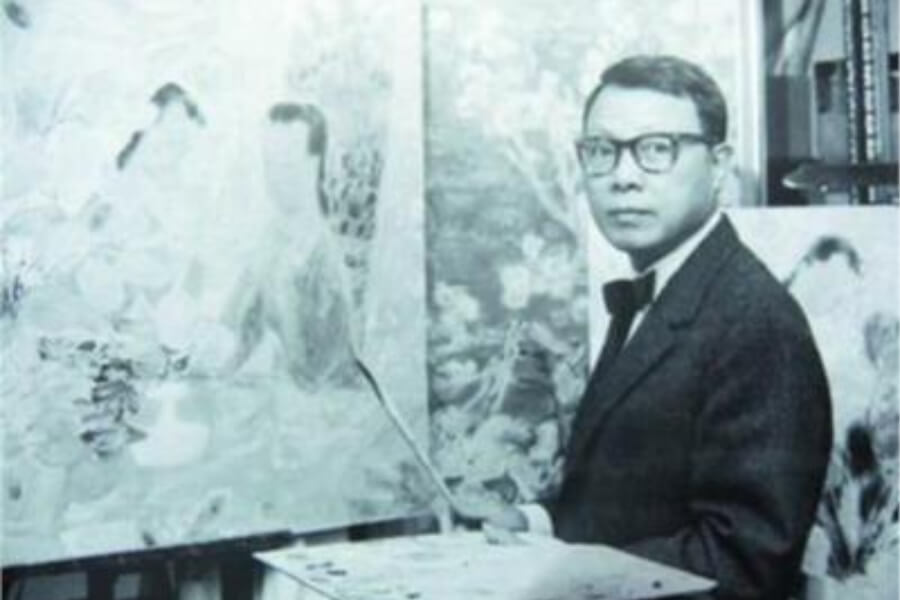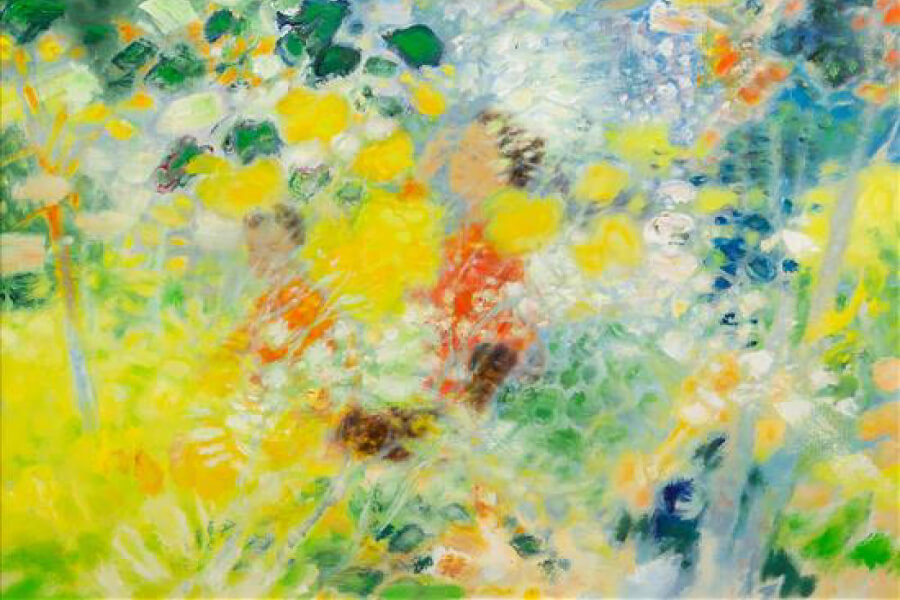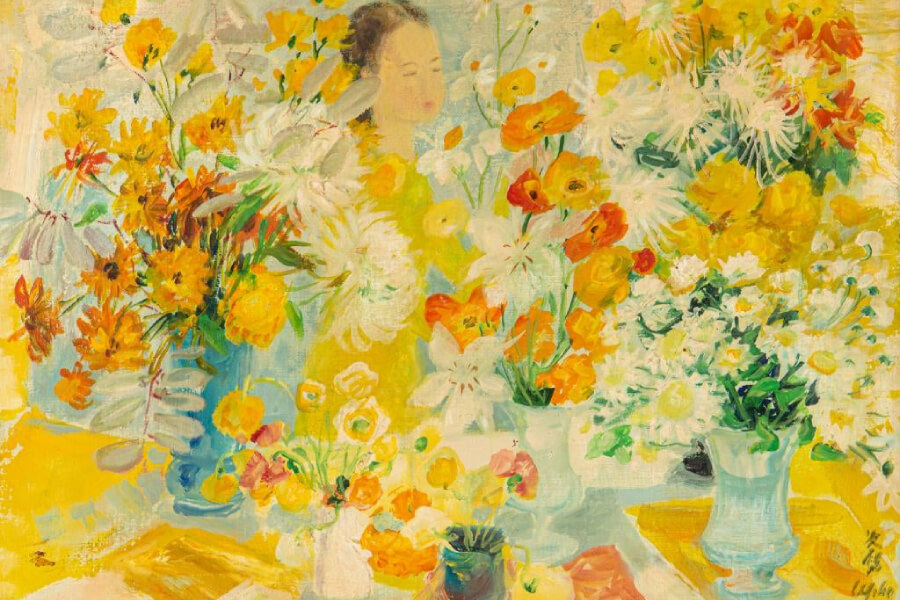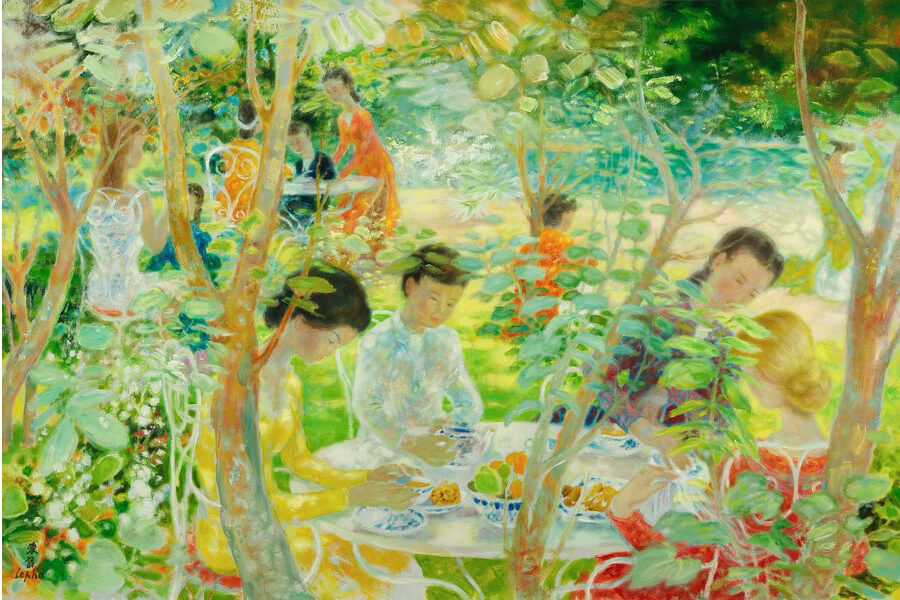Biography of Le Pho
Le Pho ( 2 August, 1907 – 12 December, 2001). He was born in Nhan Chinh commune, Tu Liem district, Hoai Duc administration, Ha Dong province’s Cu Loc village (now Nhan Chinh ward, Thanh Xuan district, Hanoi), afterwards Hoan Long district.
He moved to France in 1937 and remained there until his death in Paris in 2001, never setting foot back in his native country.
The famous Mandarin Le Hoan, father of the painter Le Pho, is credited in history books as having contributed to the suppression of the De Tham insurgents. Le Pho, a painter, had a difficult upbringing because he lost both his parents when he was 3 and 8 years old. He afterwards moved in with his brother and sister-in-law and was always held accountable for his grandchildren’s misdeeds.
Le Pho’s Career
Le Pho, a painter, was admitted to the Indochina Fine Arts University’s first class in 1925. He was one of 10 Vietnamese students identified by Professor Victor Tardieu as belonging to the group of “elite” students. Professor Tardieu is a painter with extensive knowledge of European art institutions. When Le Pho was an 18-year-old Hanoi teenager, this art school had a significant impact on him. His wife, Mrs. Vaux, stated in the interview that he views Professor Tardieu as a spiritual father. He is quite close to Tardieu and admires him. Tardieu has set himself up for success in the arts.
In 1928, he, together with painters Vu Cao Dam, Mai Trung Thu, organized the first painting exhibition in Hanoi.
In 1931, Le Pho went to France to decorate some exhibitions in Paris. After 1 year, he was granted a scholarship to study at the Paris School of Fine Arts. Therefore, he had the opportunity to learn about many European countries, contact and get acquainted with many art schools, in which Impressionism influenced the artist’s later works of art.
In 1933, the artist returned to Hanoi to teach at the Indochina Fine Arts College.
In 1935, the Beijing palaces and temples were visited by the artist to study classical Chinese art. At the end of the year, he was invited to Hue to paint portraits of Emperor Bao Dai and Queen Nam Phuong. In addition, he also painted large-scale decorative paintings in the Hue royal court.
In 1937, Le Pho went to Paris, the art center of Europe, to take charge of the Indochina pavilion at the international exhibition. In France, he was really fascinated with the magnificent beauty and diverse art schools, so the artist applied to settle in the hexagonal country.
In 1938, for the first time, painter Le Pho organized his own personal gallery exhibition with works such as paintings of Vietnamese beauties either reveling in the vibrant colors of flowers, or dreaming on the side of the book; or paintings of young women reading love letters in the garden, girls drying clothes… are warmly received by the Western public.
In 1941, he held an exhibition in Alger in 1941 with his close friend, the painter Mai Trung Thu, and it was a great success, selling many pieces of art.
In 1963, Le Pho organized three art exhibitions in conjunction with the Wally Finday gallery in the United States. He exhibits and publishes his paintings in the gallery and all around the world.
In 1964, he entered into a contract with the Wally Findlay gallery in the US, and the gallery was responsible for representing and promoting his art in the US and European markets until the late 1980s. He is inspired to produce more artwork by the fact that several auctions have featured his works. His paintings have been on display at Christie’s and Sotheby’s for the past ten years, and more people are looking to acquire his works of art. A gifted artist is typically well-liked and sought after by local collectors. The majority of Vietnamese who adore and collect Le Pho paintings, meanwhile, are expatriate Vietnamese. Currently, the people searching for his work are collectors and traders of European and Asian artworks such as the UK, USA, Australia, Singapore, Indonesia, Hong Kong. His paintings are highly valued at auctions and are offered for sale alongside works by big names in Asia and Europe. Prices for his works have been on the rise, such as the oil-on-silk painting “A Girl Picking Flowers” which sold for $339,797 in Hong Kong last year.
In 1993, Le Pho gave a “gift” to show his sincere gratitude at an advanced age. The artist declared, “I have lived in France for 60 years and have French nationality, but I never stop missing my own country. As a result, I have reserved 20 carefully chosen paintings that I will give to the Vietnam Fine Arts Museum.
Le Pho With His Styles of Painting
Le Pho said that silk painting materials have some disadvantages not only in terms of framework but also in color materials that have not yet revealed the words the author wants to express. He switched to oil painting as a result. He also changed the drawing materials and increased, liberalized, and improved the mentioned content. A clear example is that the woman in the artist’s paintings gradually goes beyond the thousand-year religious ritual to take on a “secular” color.
Le Pho’s paintings are rich in expression, the subject and expression are both close and true, but also very elegant and luxurious. Bright colors are aesthetically appealing and ought to be favored by most people worldwide. Many Western visitors collect Le Pho’s paintings because they have a distinct East Asian “aura” and are not blended. He very skillfully manipulated the universal themes of Western culture – especially those from the Bible, and then integrated them into the Asian or Vietnamese context.
Le Pho‘s Highlighted Artworks
• “The et Sympathie” (1907-2001) has sold for US$1.36 million at Sotheby’s Hong Kong auction house.
• Still life with artichokes, 1956
• La Fleuriste, 1967
• The Birthday Cake, 1975
• Afternoon in the Garden…






